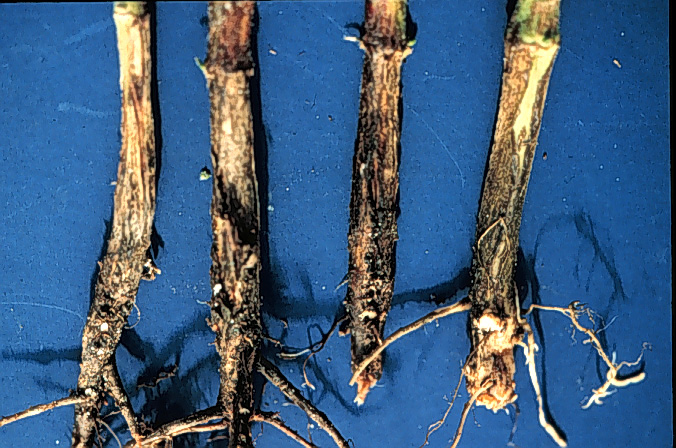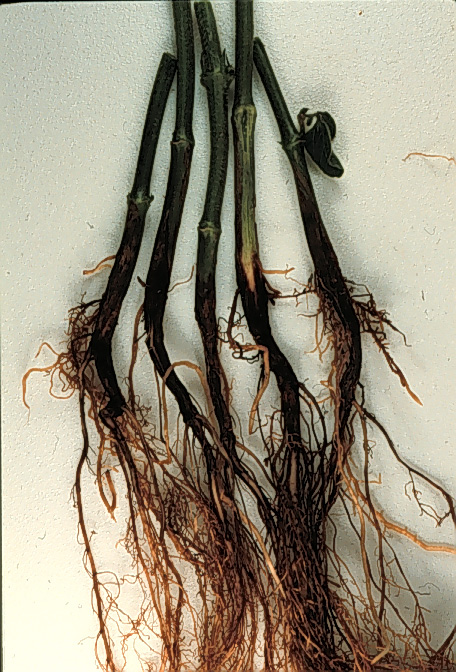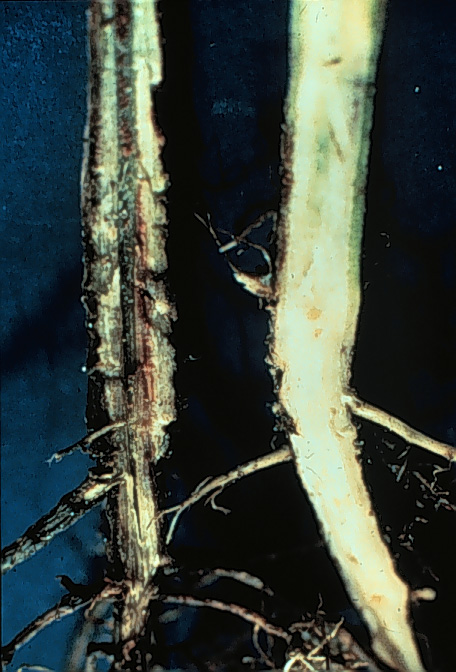|
Fusarium
Root Rot
By Berlin Nelson, Professor, Dept. Plant Pathology
Fusarium root rot, caused by Fusarium solani can cause damping-off
of seedlings and root rot on older plants. Infected seedlings can
result in poor weak stands, late emergence or stunted plants. Infected
seedling roots will show reddish brown or dark to light brown discoloration
and decay. The disease at this stage may be misdiagnosed as Rhizoctonia
because symptoms are similar. Symptoms on older plants consist of
reddish brown to black lesions on lateral roots and the tap root.
In advanced stages of disease, there is decay of the cortex, the
roots are black, and there are fissures in the dead surface tissues
of the tap root. There may be few nitrogen fixing nodules in the
roots. Plants may appear stunted or unthrifty, and there can be
a yellowing (chlorosis) of the leaves (starting at the edges) with
the veins remaining green for a short time. The leaves eventually
become completely yellow, then die from the edges inward and fall
from the petioles. These foliar symptoms are different from those
caused by sudden death syndrome.
Fusarium root rot is common in North Dakota but severe damage has
often been observed in association with stressed plants, such as
in drought conditions or with herbicide damage. The root rot predisposes
plants to damage from other stresses. High populations of the pathogen
in the soil, however, may result in disease development under good
growing conditions. The pathogen may interact with other pathogens
such as Rhizoctonia or the soybean cyst nematode to cause
disease. Disease severity may be greater in plants showing iron
chlorosis.
| Lower part of stem showing dark discoloration and decay from
Fusarium root rot. |

| Discolored and decayed root systems and base of
plants |
Advanced stages of root rot in adult plant on
left compared to healthy plant on right. |
 
Management.
Crop rotation will lower populations of the pathogen in the soil.
When there is evidence of this disease, avoid dry beans in close
rotations because the pathogen can infect dry beans. All cultivars
appear to be susceptible to Fusarium root rot. Fungicide seed treatments
can reduce damping-off by F. solani, but will not protect
adult plant roots. Damage to seedlings often occurs during weather
conditions not conducive to rapid seed germination and plant emergence.
Ridging soil around the base of the plants can promote root growth
and reduce damage to root rot in older plants. Use high quality
seed, plant in warm well drained soils, reduce soil compaction to
promote root growth and provide good soil fertility.
|